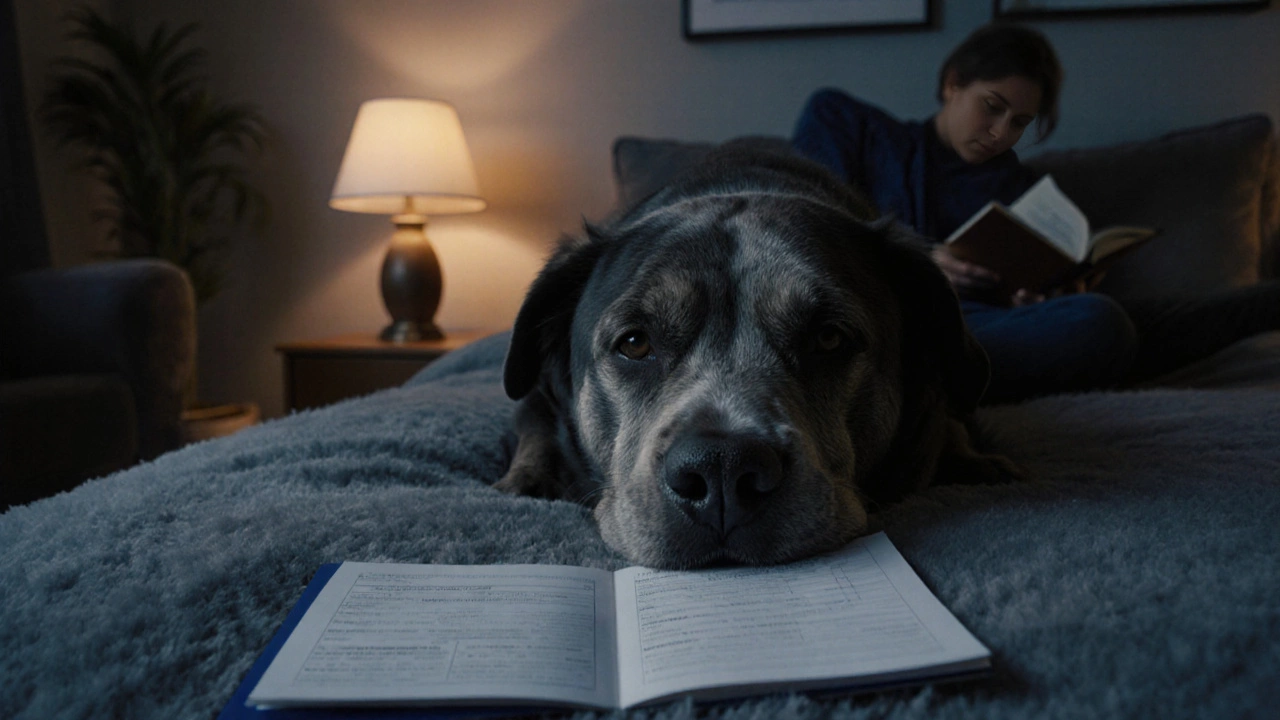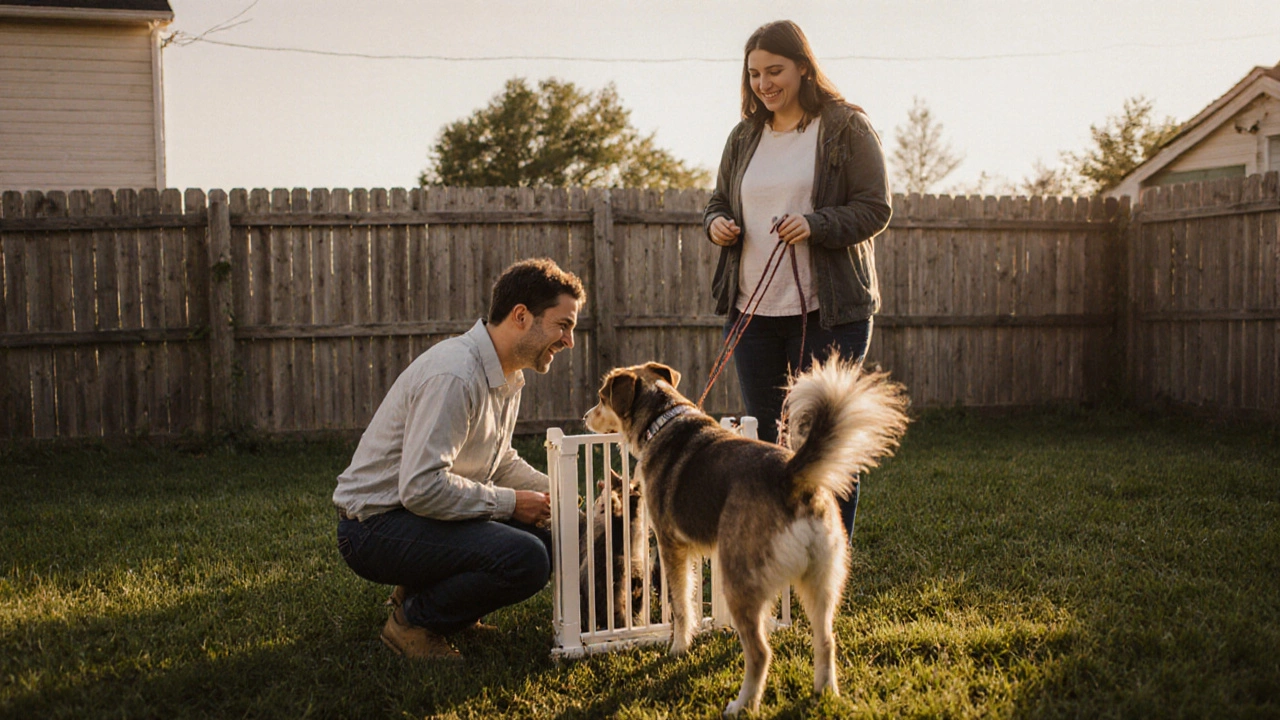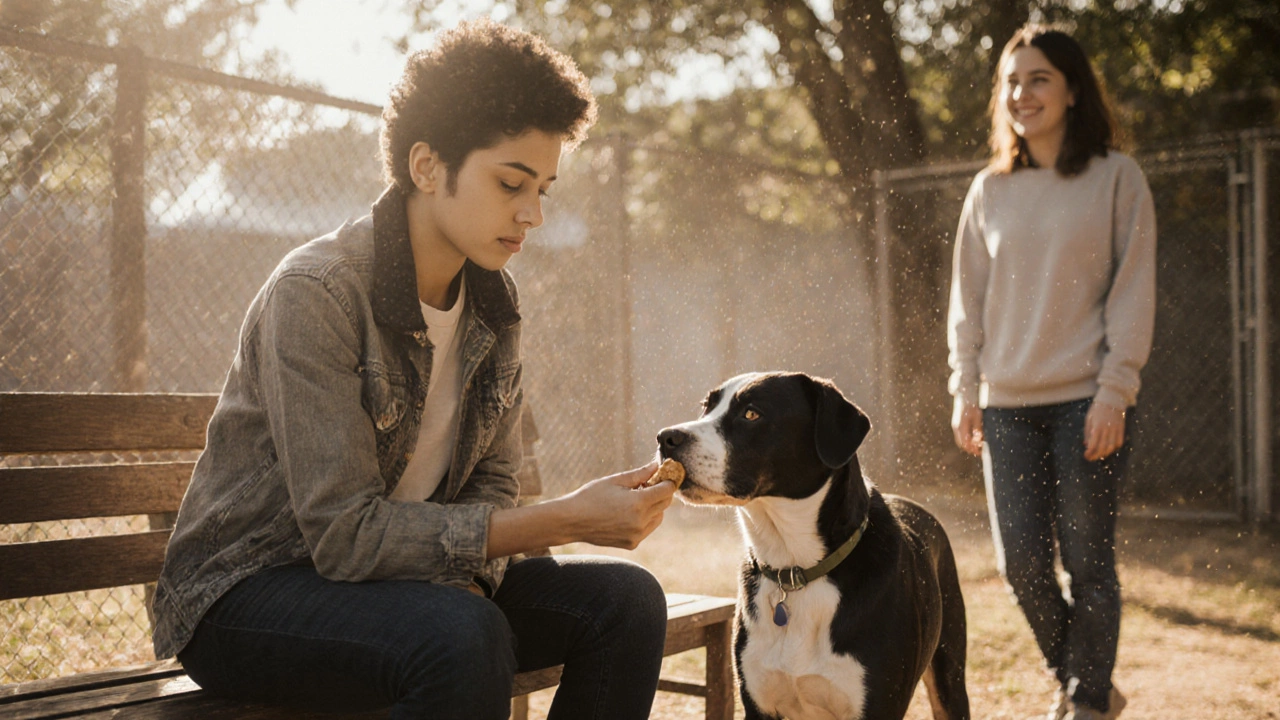Adopting a dog isn’t just about bringing home a cute puppy with big eyes. It’s a life change-one that starts long before you walk out the door with a leash in hand. If you’re thinking about adopting, you’re not alone. In 2024, over 1.2 million dogs found new homes through shelters and rescues in the U.S. and Europe alone. But many people don’t realize how deep the process goes. It’s not a quick trip to the pound. It’s a careful match, made to last.
Step 1: Be Honest About Your Lifestyle
Before you even visit a shelter, ask yourself: What kind of dog fits my life? A high-energy Border Collie won’t thrive in a small apartment with no yard. A senior dog with arthritis won’t enjoy long hikes. You don’t need to be perfect, but you do need to be real.Think about your work schedule. Do you travel often? Can you handle barking during the day? Are you okay with shedding, chewing, or accidents? Shelters ask these questions for a reason. They’ve seen too many dogs returned because someone didn’t plan ahead.
If you work 9 to 5, consider a calmer breed like a Basset Hound or a mixed-breed senior. If you’re active and outdoorsy, a Labrador or Australian Shepherd might be a better fit. Age matters too. Puppies need constant attention. Adult dogs often come already house-trained and with known temperaments.
Step 2: Find the Right Shelter or Rescue
Not all shelters are the same. Some are city-run facilities with high turnover. Others are nonprofit rescues that pull dogs from overcrowded pounds and place them in foster homes. Rescue organizations often know their dogs better-what they’re scared of, how they act around cats, whether they’re leash-reactive. That info is gold.Start by searching online. Use sites like Petfinder or Adopt-a-Pet to filter by location, breed, age, and size. Call ahead. Ask if they do home visits. Ask if they offer post-adoption support. Good rescues don’t just hand over a dog and say goodbye. They follow up. They answer questions. They help if things get tough.
In Ireland, organizations like the Irish Society for the Prevention of Cruelty to Animals (ISPCA) and local breed-specific rescues (like Greyhound Rescue Ireland) are trusted starting points. Don’t skip the small ones-they often have fewer dogs but more personalized care.
Step 3: Complete the Application
Adoption applications aren’t just paperwork. They’re a filter. They help shelters figure out if you’re ready. Most will ask for:- Your full name, address, and contact info
- Proof of housing (landlord permission if you rent)
- References (personal or vet)
- Details about other pets in the home
- Previous dog ownership history
Some places require a home visit. Don’t panic. It’s not an inspection-it’s a conversation. They’ll check if your yard is fenced, if there are toxic plants, if the space is safe. They’re not judging your cleaning habits. They’re making sure your dog won’t escape, get hurt, or feel unsafe.
If you’ve never owned a dog before, that’s okay. Just be upfront. Many shelters run beginner orientations or pair new adopters with mentors. They want you to succeed.

Step 4: Meet the Dog
This is where emotions run high. You see a sweet face, and your heart skips. But don’t rush. Spend at least 20-30 minutes with the dog. Bring your whole family if you live with others. Bring your current dog if you have one.Watch how the dog reacts. Does it come to you? Or does it hide? Does it jump on you or stay calm? Does it react badly to loud noises or sudden movements? Ask the staff: “How does this dog behave on a leash?” “Does it bark at other dogs?” “Is it house-trained?”
Some shelters have meet-and-greet areas. Others do introductions in foster homes. That’s even better. You’ll see the dog in a real environment-eating, resting, reacting to kids or cats.
If you feel a connection, great. But don’t adopt on the spot. Take the dog’s file home. Sleep on it. Talk to your partner. Come back the next day. Many adoptions fall through because people didn’t give themselves time to think.
Step 5: Pay the Fee and Get Paperwork
Adoption fees vary. In Ireland, they usually range from €150 to €400. That might seem steep, but it covers:- Vaccinations (rabies, distemper, parvo)
- Microchipping
- Spay/neuter surgery
- De-worming and flea treatment
- Basic health check
That’s worth over €800 if you paid for these services separately. You’re not paying for the dog. You’re paying for the care they’ve already received.
You’ll get a packet of documents: vaccination records, microchip number, adoption contract, and sometimes a starter bag of food. Keep these safe. You’ll need them for vet visits and future insurance claims.

Step 6: Bring Your Dog Home
The first 72 hours are critical. Your new dog might be quiet, scared, or overly excited. That’s normal. They’ve been through a lot. Give them space. Don’t force attention. Let them explore at their own pace.Set up a quiet room with a bed, water, food, and a safe toy. Keep other pets separated at first. Use baby gates. Introduce them slowly. Feed them the same food they were eating at the shelter for the first week to avoid stomach upset.
Take them outside to potty every 2-3 hours. Even if they were house-trained, a new environment can reset their habits. Don’t punish accidents. Clean them up with an enzymatic cleaner. Dogs don’t feel guilt-they feel confusion.
Keep walks short and calm. Avoid busy streets or dog parks for the first week. Let them build confidence in your home first.
Step 7: Follow Up and Stay Committed
Adoption doesn’t end when you sign the papers. The real work starts now. Most shelters offer a 30-day support line. Use it. Call if your dog won’t eat. If they’re anxious. If they’re chewing the couch. You’re not failing. You’re learning.Schedule a vet visit within 10 days. Even if they seem fine, a wellness check catches hidden issues. Update their microchip info with your details. Register them with your local council if required.
Consider training classes. Even basic obedience builds trust. And remember-this dog didn’t choose to be in a shelter. They’re not broken. They’re just waiting for someone who’ll stick around.
What to Expect in the First Month
- Days 1-3: Quiet, hiding, testing boundaries
- Days 4-10: Starts to relax, begins to bond
- Week 2-3: Shows personality, may have setbacks (accidents, barking)
- Week 4: Begins to trust you, sleeps through the night
Progress isn’t linear. There will be bad days. But if you’re patient, the good days will outnumber them.
How long does the dog adoption process take?
It can take anywhere from a few days to a few weeks. If you’re a first-time adopter with a stable home, you might get approved in under a week. If you’re renting, need a home visit, or are adopting a dog with special needs, it could take 2-3 weeks. The process moves faster when you’re prepared with documents and references.
Can I adopt a dog if I live in an apartment?
Yes, absolutely. Many shelters have dogs that thrive in apartments-smaller breeds, older dogs, or low-energy mixes. The key is matching the dog’s activity level to your space. A 10-year-old Beagle who naps most of the day is a better fit than a 2-year-old Jack Russell who needs 2 hours of intense exercise daily. Make sure your landlord allows pets and provide proof if asked.
What if I already have a pet at home?
Most shelters will arrange a meet-and-greet with your current pet. Dogs with known histories are often tested for compatibility. If you have a cat, ask if the dog has cat experience. Introduce them slowly-on-leash, in neutral space, with treats. Keep them separated at first and supervise closely. It can take days or weeks for them to adjust, but many dogs and cats become best friends.
Are shelter dogs dangerous or aggressive?
Very few are. Most dogs end up in shelters because their owners moved, divorced, or couldn’t afford vet care-not because they were aggressive. Reputable shelters assess behavior before placing dogs. If a dog has a history of aggression, they’ll tell you upfront and only place them in experienced homes. You’ll always know what you’re getting.
Can I return the dog if it doesn’t work out?
Most shelters have a return policy, usually within 14-30 days. But they’ll ask why. If it’s a behavior issue, they’ll often offer free training help before accepting a return. The goal isn’t to punish you-it’s to help you succeed. Returning a dog is hard, but it’s better than keeping them in a home where they’re unhappy.
Adopting a dog isn’t a gift you give to a pet. It’s a gift you give to yourself. You’ll get loyalty, comfort, and a reason to get up in the morning. But it takes patience, honesty, and commitment. The right dog is out there. Not the perfect one. Just the one who’s meant for your life.

